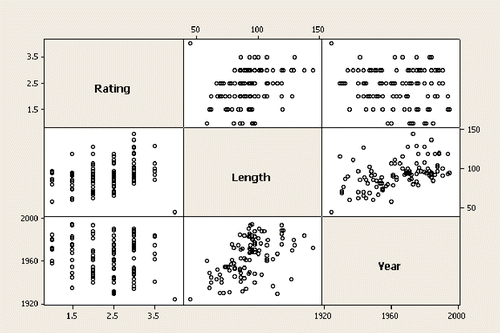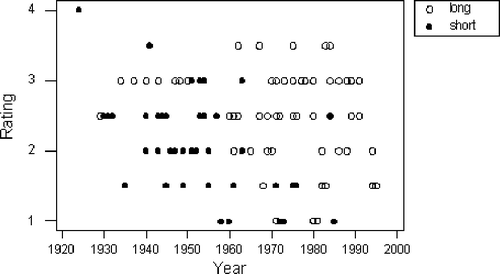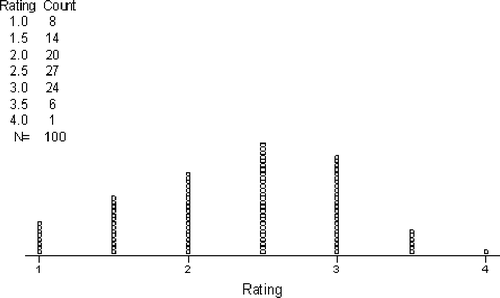Figures & data
Figure 1. Scatterplot matrix of Rating, Length, and Year. Notice that longer movies tend to have higher ratings and more recent movies tend to be longer movies, but that Year and Rating appear to be uncorrelated or, perhaps, negatively correlated.

Table 1: Pairwise correlations between 3 qunatitative variables, with P-values.
Figure 2. Rating vs. Year, coded by Length. Movies less than 90 minutes are coded as short, while movies 90 minutes or longer are coded as long.

Table 2: Rating versus Year correlations, controlling for Length. The negative correlation between Rating and Year is more evident: within each Length category more recent movies get lower ratings.
Table 3: Here is a summary of favorite examples of Simpson's paradox. In each case, the direction of an X-versus-Y relationship is reversed when controlling for the Z variable.
See the references for the complete data and the stories behind the data.
Table 4: The percentage of good movies is higher for new movies (32%) than for old (30%).
But this comparison reverses itself when controlling for movie length (i.e., when disaggregating into Short or Long movies.)
Figure 3. The distribution of ratings for a SRS of 100 movies. We include both a dotplot and a frequency table. The average rating is about 2.5 (**1/2).
